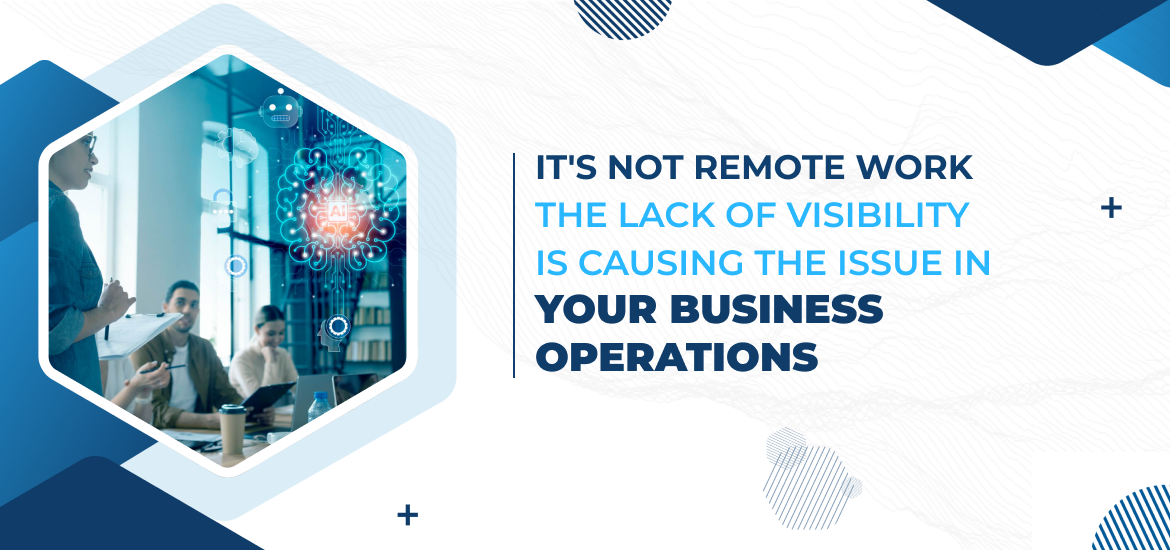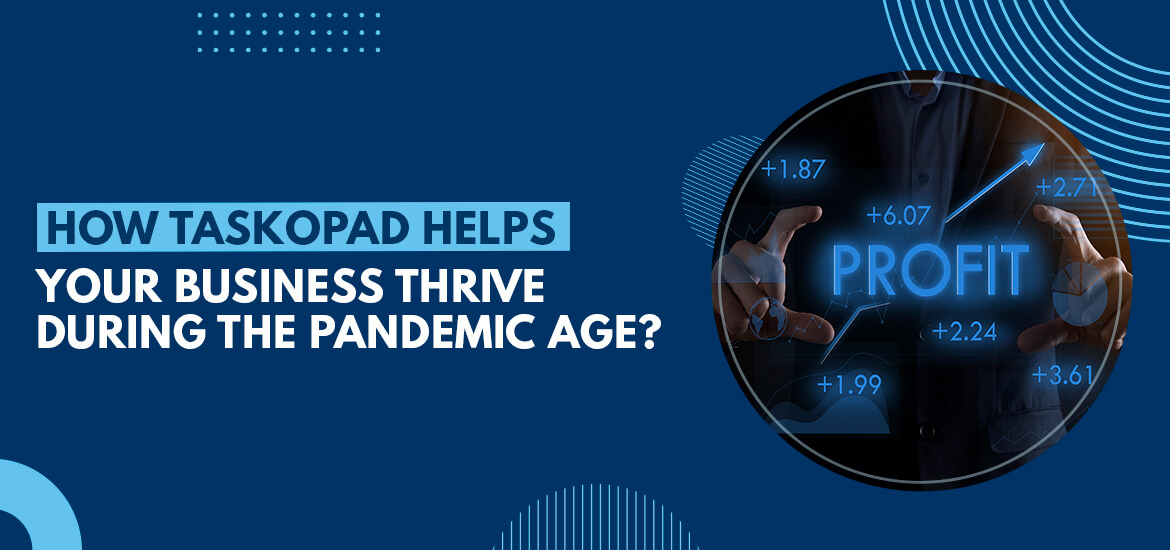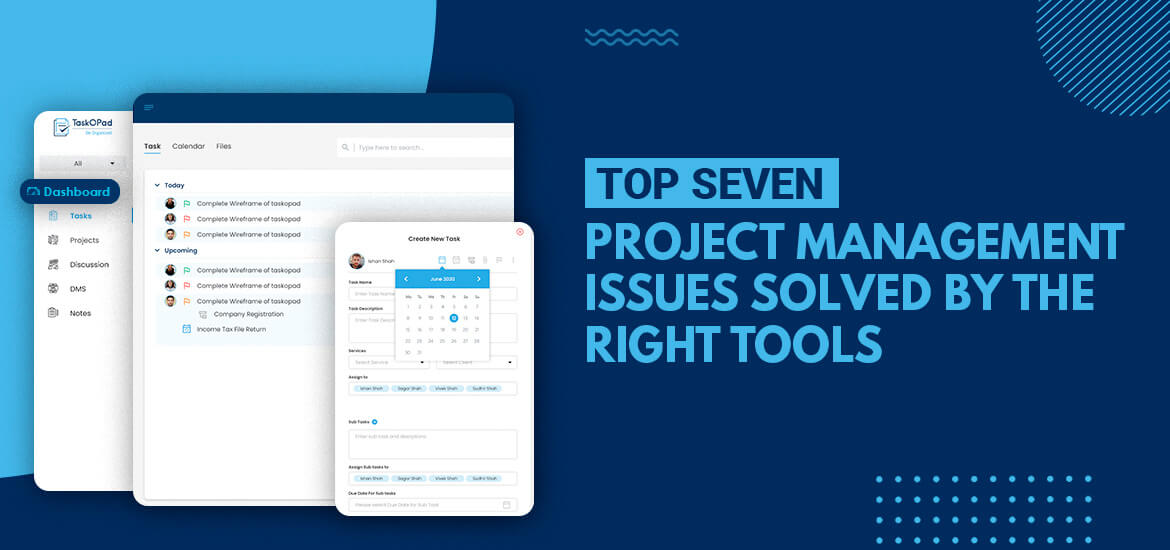
Project Management Software
It’s Not Remote Work; The Lack of Visibility is Causing the Issue in Your Business Operations
Jun 27th, 2025
As the Head of Business, you’re constantly evaluating strategies to optimize performance, enhance efficiency, and ultimately, drive profitability. Over the past few years, the narrative around remote and hybrid work has often centered on its perceived challenges, with many quick to point fingers at distributed teams for operational hurdles. However, there’s a different perspective – one that aligns more closely with the underlying issues businesses face. It’s not the remote work model itself that’s causing problems; it’s the lack of visibility across your entire business operations, exacerbated but not solely caused by a distributed workforce.
Let’s dissect this.
The Illusion of Control vs. The Reality of Blind Spots
When everyone was in the office, there was a sense, often a false one, of control and oversight. A quick walk around, an impromptu chat by the water cooler, or simply observing team interactions could give a manager a snapshot of what was happening. In a remote or hybrid setup, these informal channels diminish, and if not replaced with structured visibility mechanisms, we are left with significant blind spots.
Consider these critical areas where a lack of visibility can be detrimental:
- Workforce Performance & Engagement: Are your distributed teams truly productive or silently struggling? Traditional metrics often miss the mark. While remote work offers flexibility, issues like burnout from always being “on” and time zone challenges persist for many remote workers in 2025. Disconnected teams with unclear priorities often lead to disengagement.
- Operational Bottlenecks & Inefficiencies: Without real-time insight into workflows, bottlenecks thrive, impacting timelines and budgets. For example, 60% of businesses in 2025 only discover shipment damage post-delivery or not at all, leading to wasted inventory and strained customer relations. Further, 46% of organizations battle data silos that slow crucial decision-making.
- Project Progress & Resource Utilization: Are your resources effectively allocated, and are projects on track? A staggering 39% of projects fail due to poor planning or a lack of clear task management. Without a centralized view of tasks, dependencies, and individual workloads, identifying and addressing issues proactively becomes impossible.
- Risk Management & Compliance: Operating without clear visibility of systems, data flow, and access points leaves your business vulnerable to cybersecurity threats and compliance breaches. In 2025, supply chain visibility is crucial for early risk identification and proactive responses, protecting your operations from unforeseen disruptions.
The Data Speaks: Why Visibility is the True North
The latest trends and statistics underscore this shift in focus from “remote work is the problem” to “lack of visibility is the problem”:
- Supply Chain Resilience: Supply chain visibility is no longer a competitive advantage; it’s a fundamental requirement. Real-time tracking and monitoring using IoT devices and sensors are becoming standard, with AI and machine learning being leveraged for predictive analytics and demand forecasting. Only 6% of businesses achieved full supply chain visibility, despite 93% of senior supply-chain executives intending to make their supply chains far more flexible, agile, and resilient.
- Operational Efficiency & Cost Savings: Enhanced operational visibility, powered by technologies like IoT, AI, and big data analytics, allows businesses to streamline processes, eliminate bottlenecks, and prevent issues before they escalate. This translates directly to significant cost reductions and improved financial performance.
- Data-Driven Decision Making: Companies using data-driven strategies are twice as likely to exceed their business goals. Real-time data and analytics provide the foundation for informed, strategic decisions across all facets of the business.
- Workforce Management Evolution: The focus in workforce management is increasingly on data-driven insights, real-time reporting, and predictive analytics. This isn’t about micromanaging; it’s about understanding workforce dynamics, identifying skill gaps, optimizing resource allocation, and ensuring employee well-being.
Also Read – 7 Tips To Manage Communication Overload At Workplace
Solutions: Building a Culture of Pervasive Visibility
So, what’s the path forward? It’s about intentionally building a culture and implementing the tools that provide comprehensive, real-time visibility across all operations, regardless of where our teams are located.
- Unified Platforms for Collaboration and Project Management: Break down data silos. Integrated platforms offer a single source of truth for projects, tasks, and communication, allowing for a holistic view of progress, dependencies, and potential roadblocks. Businesses that use structured project management practices see 38% more projects meet their original goals (PMI).
- Clear Communication Protocols and Expectations: Establish clear guidelines for communication channels, response times, and information sharing. This fosters accountability and ensures everyone knows where to find critical information.
- Outcome-Based Performance Metrics: Shift focus from “hours worked” to “results achieved.” Define clear KPIs and OKRs that are easily measurable and transparent. This empowers employees and provides clear indicators of success, regardless of location.
- Strategic Use of Technology (AI, IoT, Analytics): Embrace technologies that provide real-time data and actionable insights. From IoT sensors tracking inventory to AI-powered analytics identifying trends, these tools are essential for proactive decision-making. AI adoption in supply chain operations, for example, has risen from 35% to 45%.
- Regular, Structured Check-ins and Feedback Loops: Managers need to regularly connect with their teams, not just to assign tasks, but to understand challenges, celebrate successes, and ensure alignment with broader business goals.
Also Read – How Project Management Software Connects Your Distributed Team
Bringing it all together with the right project management tool
To truly achieve this pervasive visibility, you need a robust system that integrates task management, project management, and collaborative communication into a single, intuitive platform. This is where a project management tool like TaskOPad becomes invaluable.
Think about how TaskOPad can specifically address these visibility gaps:
- Centralized Task and Project Tracking: Project management tool provides a single dashboard to assign tasks, set deadlines, and track real-time progress across all projects. This eliminates the “who’s doing what?” question, providing you with an immediate overview of team capacity and project status. Managers gain full visibility into task progress and team performance.
- Seamless Communication & Collaboration: With built-in chat discussions, file sharing, and notifications, project management software minimizes reliance on scattered emails and ensures all project-related communication is centralized and easily accessible. This fosters transparency and ensures everyone stays aligned and updated.
- Workflow Management for Efficiency: You can define and standardize workflows within a project management tool, automating routine tasks and ensuring consistency across operations. This streamlines processes, reduces manual effort, and significantly cuts down on hidden operational expenses due to inefficiencies.
- Time Tracking & Performance Insights: Project management tool’s time tracking features allow for accurate monitoring of work hours, giving you data-driven insights into team efficiency and potential bottlenecks. The comprehensive reporting and analytics help you identify trends, optimize workload distribution, and make informed decisions about resource allocation. This kind of reporting is crucial for identifying areas for continuous improvement.
- Accountability and Ownership: Clear task assignment and tracking within the project management tool naturally lead to enhanced accountability. When responsibilities are clearly defined and progress is visible, team members are more engaged and proactive in meeting their commitments.
Also Read – Reduce Hidden Operational Expenses with Task Management Software for Business
Conclusion
The transition to remote and hybrid models wasn’t the problem. It merely highlights a spotlight on existing, systemic issues related to a lack of operational visibility. By proactively addressing these blind spots with the right strategies and technologies, you can not only overcome the perceived challenges of distributed work but also unlock new levels of efficiency, resilience, and growth for our entire business. This isn’t just about managing remote teams. It’s about building a smarter, more agile, and ultimately more successful enterprise for the future.
Integrate a powerful project management tool like TaskOPad into your workflow. Book your free demo now to discover how experts can help your business thrive with the right tools in place.
Search by posts
Search by posts
Recent posts
7-15-2025
Task Management Software
How to Choose the Best Task Management Software for Your Digital Marketing Agency
6-28-2025
Project Tracker Tool
Top 8 Steps to Execute Tasks Systematically for Accomplishing Your Project
6-27-2025
Project Management Software













